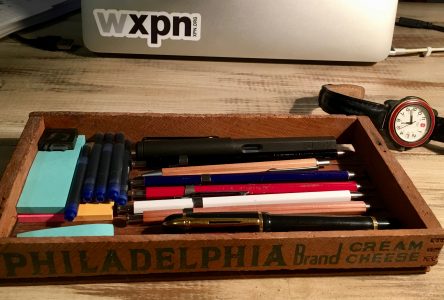When I opened this book and read what Odell was saying I had to pause and first figure out, what is the attention economy? After some research on the internet I found that the attention economy is something that I am so used to, I didn’t even realize it was there. When I see an ad on Instagram for something based on a picture I just liked, that is the attention economy. The ad that plays before every Youtube video is the attention economy. The internet is monopolized by three companies: Google, Apple, and Facebook. But Google, Apple and Facebook don’t care about you as a person; they care about their revenue. This means they care about holding your attention. Their ultimate aim is to keep you scrolling and searching, using their products over competitors. Odell’s project is “a guide to doing nothing as an act of political resistance to the attention economy.”
Odell believes very strongly in the immoral monopoly that is social media. She also is very anti-capitalism. She believes that these two things are draining the life out of us. She uses a quote from Seneca that reads, “Look back in memory and consider… how many have robbed you of life when you were not aware of what you were losing, how much was taken up in useless sorrow, in foolish joy, in greedy desire, in the allurement of society, how little of yourself was left to you; you will perceive that you are dying before your season!” She connected this to not only spending your day on facebook, but also connected it to our society and how in a time where intelligent conversations are key, we find ourselves unable to achieve those crucial in-person conversations.
Odell’s purpose is to fight this way of life. How does she want us to fight? By doing nothing. Now doing nothing is not like it seems. She describes her “nothing” as a plan of action. In the introduction she says, “ The point of doing nothing, as I define it, isn’t to return to work refreshed and ready to be more productive, but rather to question what we currently perceive as productive.” To me, she is trying to get her readers to look at life through a different lens. We are so comfortable with the life we live we never stop to question it. We let social media control our lives for what reason? To conform to society. Odell believes that the world we live in now due to the culture of Trump is “impatient with anything nuanced, poetic, or less-than-obvious” and social media is a big contributor to that. Individuality is frowned upon. The more you are like everyone else, the more people like you. The more people like you, the more followers you have on social media.
Odell uses personal stories to try to get us to understand where she is coming from. She tells us personal stories and then connects them to her beliefs. She tells us a detailed story about a tree called “Old Survivor” that she connects to resistance and being rooted to your true self, which are both linked to her doing nothing philosophy.
Throughout the first chapter she also talks about a rose garden. The part about the rose garden that really impacted me was when she was in the middle of this beautiful space, surrounded by every color, sight, and smell. In this moment she said, “I look down at my phone and wonder if it isn’t its own kind of sensory-deprivation chamber. That tiny, glowing world of metrics can not compare to this one, which speaks to me instead in breezes, light, and shadow, and the unruly, indescribable, detail of the real.” Growing up in the age of technology, this hit very deep. This makes me think of the concerts I’ve been to where every single person has their phone up instead of living in the moment. The time spent with friends and family, not enjoying eachothers company, but sitting on our phones. Everyone can relate to this which is what makes it so powerful. This connects to her belief in the evil in technology and makes you think of instances that technology has plagued your life.
Odell’s project is to break us out of the society we are so used to. She wants us to realize we are trapped in this attention economy. She wants us to realize the negative effects social media and capitalism have on our lives. She wants us to start doing something about this, by doing nothing. On page 22, she describes doing nothing as almost a “deprogramming device”. While she gave us some overall themes of what “doing nothing” will entail, we will have to keep reading to really understand how she expects us to make this change. It could be things as little as to not look at the ads on our phones, to delete social media, or even as drastic as throwing our whole phone away to stay away from the toxicity of the attention economy and social media. While I’m hesitant to make that change, I am oddly excited to see what she has to say because the points she brings up really have me thinking.






